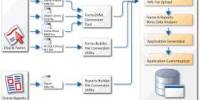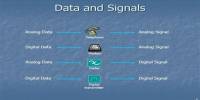Overview:
The manual process of maintaining the master data about the Crime and Criminals is very difficult. Documenting all the information during finding the feedback by paying special attention to each individual victim is tedious, time consuming and incurs a heavy cost.
For a police station, the manual process and the simple database are not feasible because the number of victims coming to the station is quite vast and with different type of case. Considering all the case and transferring them to the respective departments is very confusing and requires a lot of time. It may create congestion in the entire process thus resulting in the malfunctioning of the process.
The present method faces the following problems:
The information and status of the individual case is not clear to the investigating officer thus adding ambiguity.
Maintaining different type information and modifying them several time is difficult.
PROPOSED SYSTEM
The scope of the systems project is its range. The boundaries or range is the breadth that the study will encompass. After the detailed study of the existing system, various buffers identified are being listed in the last section. This project is being developed to overcome the drawbacks of the existing system.
The proposed system is based on the following structure:
The project is concerned with the evaluation and maintenance of the data. If there is no security, anybody can change the data at any time. So by maintaining the password facility, only the selected employees can access the data. Only these people have the authority to change the data. For easily accessing particular information, there is no need to browse all the records every time; only selection of the particular case no is enough.
Maintaining the vast database related to all the victims and accused person manually, is confusing, tiresome and time consuming. So, by computerizing these departments, the processing can be made easy. The complicacy of the problem is much reduced by the methodical approach of the software.
SYSTEM IMPLEMENTATION
Implementation is the stage of the project when theoretical design is turned into a working system. It involves careful planning, investigation of the current system and its constraints on implementation, design of methods to achieve the change over, training of the user in the change over procedures and evaluation of the change over methods.
The Criminal Information System is being implemented in the Systems Department for the use and to maintain and modify the crime and criminal related data easily. Meanwhile the end users of the system are given training, to get used to the new system and to use the system comfortably. The training is being carried out by means of short seminar series and on the job training during implementation.
FEASIBILITY STUDY
The feasibility study is carried out to test whether the proposed system is worth being implemented. The proposed system will be selected if it is best enough in meeting the performance requirements. The feasibility study is carried out in three sections:
1. Economic Feasibility.
2. Technical Feasibility.
3. Behavioral Feasibility.
Economic Feasibility:
Economic analysis is the most frequently used method for evaluating effectiveness of the proposed system, more commonly known as cost-benefit analysis. This procedure determines the benefits and savings that are expected from the proposed system and compared with the cost of the existing system.
In the case of the proposed system, the hardware in the systems department is sufficient for system development. In the similar fashion, the department has the required software and the personnel.
Technical Feasibility :
This study centers on the design and development department, hardware, software and to what extent it can support the proposed system. As the system department is having the required hardware and software, there is no question of increasing the cost of implementing the proposed system. Considering the above-mentioned criteria, the proposed system is technically feasible and the proposed system can be developed with the existing facility.
Behavioral Feasibility :
People are inherently resistant to changes and need sufficient amount of training, which sometimes result in lot of expenditure, which is an additional expenditure for the organization. But in this system being extremely user-friendly incurs minimum cost for the training of the staffs in this software. Hence this system is very much behaviorally feasible.
Determination of Requirements:
Requirement analysis is a detailed study of the various operations performed by a proposed system and their relationships within and outside of the system. A key question is – “what must be done to solve the problem?”, “How is it being done?” , “How huge the volume of transaction is?” , “What is the actual nature of the problem?”
One aspect of the requirement analysis is defining the boundaries of the system and determining that whether or not the proposed system should consider the other related system.
Studying existing documents and discussing with the various concerned personnel carried out the requirement determination.
Introduction to database
A data base system is essentially nothing more than a computerized record keeping system. The database itself can be regarded as a kind of electronic filling cabinet. In other words, it is repository for a collection of computerized data files.
The user of the system will be given facilities to perform a variety of operations on such files, including the following among others:
- Adding new , empty files to than database
- Inserting new data into existing files
- Retrieving data from the existing file
- Updating data in existing file
- Deleting data from the existing file
A database consists of some collection of some collection of persistent data that is used by the applications system of given some enterprise.
The term “enterprise” here is simply a convenient generic term for any reasonable self-contained commercial, scientific, technical or other organization.
An enterprise might be single individual (with a small private database), or a complete corporation or similar large body (with a very large shared database), or anything in between. Here are some examples :
- A manufacturing company.
- A bank
- A hospital
- A university
- A government department
Any enterprise must necessarily maintain a lot of data about its operation. This is the “persistent data” referred to above the enterprise just mentioned would typically include the following among their persistent data:
- Product data
- Account data
- Patient data
- Student data
- Planning data
Database management system:
The database management system (DBMS) is the software that handles all access to the database. When a user issues an access request, using some particular data language (typically SQL), then DBMS intercepts that request and analyzes it. The DBMS also executes the necessary operations on the stored database some more functions of the DBMS are given below :
- Data definition:
The DBMS must be able to accept data definitions in source from and convert them to the appropriate object form.
- Data manipulation:
The DBMS must be able to handle records from the user to retrieve, update or delete existing data in the database or add new data to the database.
- Data security and integrity:
The DBMS must monitor user requests and rejects any attempt to violate the security and integrity rules, which is defined by the data administrator.
- Data recovery and concurrency:
The DBMS or some other related software component, usually called the transaction manager must enforce certain recovery and concurrency controls.
- Data dictionary:
The DBMS must provide a data dictionary function. The dictionary contains “data about the data” (or may be called as metadata) that is definitions of other objects in the system or just “raw data”.
Database technology defines the data model as one of the three traditional forms for the organization of data:
1. Hierarchical model
2. Network model
3. Relational model
1. Hierarchical model:
A hierarchical database is one where the relationship between files forms a hierarchy. In a hierarchy, files rank from top to bottom, with higher level files being the parents of lower files. In a hierarchy, a file may have several child files, but each has only one parent file.
2. Network model:
A network database is similar to hierarchical database concept that a file can have multiple parents.
3. Relational model:
In the relational database, files have no parent and no children.. They are unrelated. These are unrelated these models don’t seems to make any sense. The files are same in all the three models, but the lines connecting them are different and the relational model is one where files are unrelated.
DATABASE DESIGN
Database is the heart of any information system. It is the centralized master of basic information that is available to any authorized person within the company. A database should provide facilities for rapid retrieval of accurate and relevant information. The key element in this concept of information system is that each department utilizes the same database in the satisfaction of day-to-day information needs.
DEFINITION:
A database is a collection of interrelated data stored with controlled redundancy, to serve one or more applications. The most basic piece of data that cannot be broken into more detailed units is called data item, data element or field. Several data elements are grouped together in a predefined format, which may be referred to either as record or a data structure.
Normalization is an important stage of system design. Details of the existing system are collected to design a database in such a way that the data are stored without unnecessary redundancy. The system operations are understood, the events are divided into separate tables and master-detail relationship is maintained by having a common field in both the tables.
Primary keys are identified, and based on this, normalization was done.
The benefits gained by the normalization are: –
- Relations can be decomposed into smaller ones.
- Dependency preservation is made.
- Data redundancy is avoided.
These are the basic ways of organizing the data with database. The organization of data also should ensure that there is a minimum of redundant data occurring in two or more different data structure. Here data are organized in a relational manner.
In this system, we make use of many databases for storing the details.
RECORDS:
Records contain the information for the organization. They can be considered as vital extensions of knowledge and memory, the past history or the roadmap of the organization. Once records are created, it is inevitable that cost-effective means of handling and storing records will be sought.
The retention of the records may vary depending upon their purpose of usage. The authorized person can update any record. Records in the different databases can be linked together for some applications by connecting the key fields of the appropriate record.
















